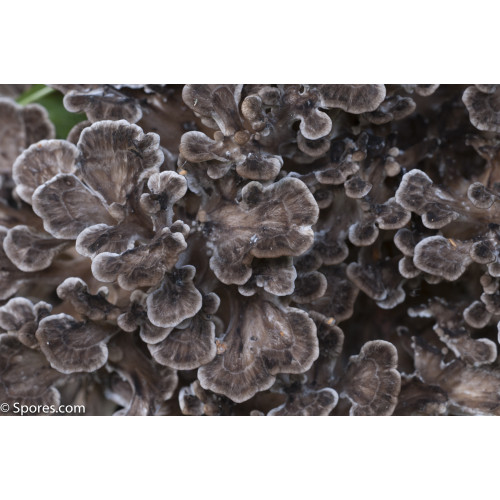

Cover the mushroom with the glass container to prevent it from drying out. Remove the stem from the mushroom of your choice and upend it, placing the cap spore side down onto the two pieces of paper with one half on white and one half on black. Put the two colors of paper side by side. Using both will enable you to see the spores regardless of their shade.) (The purpose of two colors of paper is because sometimes spores are light colored and sometimes dark. Also, you’ll need a piece of white paper, a piece of black paper, and a glass container that can be inverted over the mushroom. Make sure it is a mature specimen, one with gills readily apparent. To harvest mushroom spores by making a spore print, you need edible mushrooms - any variety will do but, as mentioned, the gill types are easiest and most available at the local grocers. A spore syringe is another method for collecting spore, but we will get back to that in a minute. The spore print can also be used by the non-scientist to grow some succulent fungi suitable for inclusion on a pizza, or what have you. A spore print makes this possible without having to use a high powered microscope.


They use the characteristic color, shape, texture and pattern of the released spores to identify the mushroom. What the heck is a spore print, you ask? Making a spore print is a method used by real mycologists, not wannabes like myself, to identify a fungus. The most common method for harvesting spores from mushrooms is the making of a spore print.
#SPORE PRINT MUSHROOM HOW TO#
Intrigued? So how to harvest mushroom spores, then? Gill mushrooms are the easiest from which to harvest spores, but with some experimentation, all types can be harvested. Each type of fungi has a different spore type and releases them in unique patterns dependent upon the form of the underside of the mushroom cap. The reproductive bodies of fungi, mushrooms’ purpose in life is to produce spores, or seeds. The following information on harvesting spores from mushrooms has me pretty excited! Spore Collection Techniques I sure would love to be able to grow my own edible mushrooms too, but the cost of commercial mushroom growing kits has kept me from trying. I generally purchase mine from the grocer or local farmers market, so I’m not familiar with spore collection techniques. As mentioned above, if you’re using a hard surface you can scrape the spore deposit together to get a clearer idea o the colour.I love mushrooms, but I am certainly no mycologist. Leave the cap like this for several hours (overnight is good).Ĭarefully remove the cap to view your spore print. Cover the cap with a bowl or jar to prevent the cap from drying-out too much and to stop drafts from blowing the spores around. Place the cap gill-side down on your glass (or whatever you’re using). In order to take a spore print remove the stem from the fungus so that the cap can lie flat.

The smooth surface also allows you to scrape together the spore deposit to get a clearer idea of the colour. This can simply be held over a dark background when viewing light prints and a light background when viewing dark prints. A benter alternative is a small square of glass. An often suggested alternative is to use half white and half black paper. White or very pale coloured spores won’t show-up well on white paper. Simple white paper is often used, though it is actually not idea. The first thing you will need is something on which to collect the spore print. It can often be the major distinguishing feature between otherwise visually similar species. Whilst the spore colour isn’t enough to identify a species on its own, it is very good at eliminating possibilities. The idea is to ascertain the colour of the spore mass. One of the more commonly used identification techniques is taking a spore print.


 0 kommentar(er)
0 kommentar(er)
